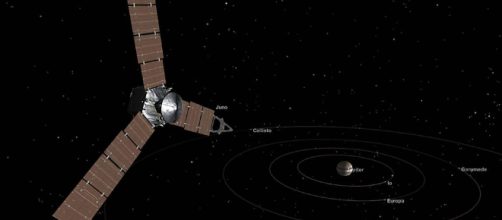NASA and Apple have joined in a partnership in attempts to make Science and technology merge to deliver an array of sounds for musical inspiration. Since its launch, Juno has been encircled by varied sounds and in space, its interaction with the interplanetary medium will provide the ideal background for the production of space soundscapes.
Music and science
The technological advances with which mission Juno has been provided and science are projected to be linked with subjects, including space equipment, art, Music, computer technology and other areas of science.
The intent is to make science and technology merge into one whole picture that will be accessible by the general audience. Apple in association with NASA are already making technology available to the music industry by enrolling musicians to record music inspired by the Juno mission.
Space music
The Zodiac; cosmic sounds was a concept album about having as its theme the signs of the zodiac. The album was released in 1967. It was made using synthesizer. 'Space Oddity' is a song by David Bowie containing space sounds. Vangelis' album Albedo was inspired entirely by space. The Beatles released 'Across The Universe' and Elton John 'Rocket Man.'
Many musical forms have been influenced by the concept of space and have been created in the musical scene through history.
Pythagoras had the idea that there existed what he called, ¨Harmony of the spheres.¨ Based on this idea, the stars and planets are driven by mathematics and the math equations derived from it could be converted into musical notes, producing a masterpiece.
What produces sounds in space?
Many objects in space produce some sort of sound, for example, the planets, the sun, stars, black holes, quasars, pulsars, and galaxies produce signals in space that are detected by radio astronomy dishes.
These signals can be processed and use by musicians in their compositions. The interplanetary medium is a source of noise in the electronic instruments of spacecraft. Lightning in the atmosphere can produce noises, including tweaks and whistles ranging in the very low radio frequencies.
Science objectives
Juno mission will study Jupiter’s atmosphere, its core, and the gravity and magnetic fields.
It will also map Jupiter´s deep interior to reveal the true structure and composition of its core. Juno has already taken a look at the gas giant planet´s magnetosphere, when it entered it weeks back; however, once in Jupiter´s orbit insertion, Juno will study its huge auroras at the poles.
Juno mission will be a source of musical notes for those interested in space soundscapes.

